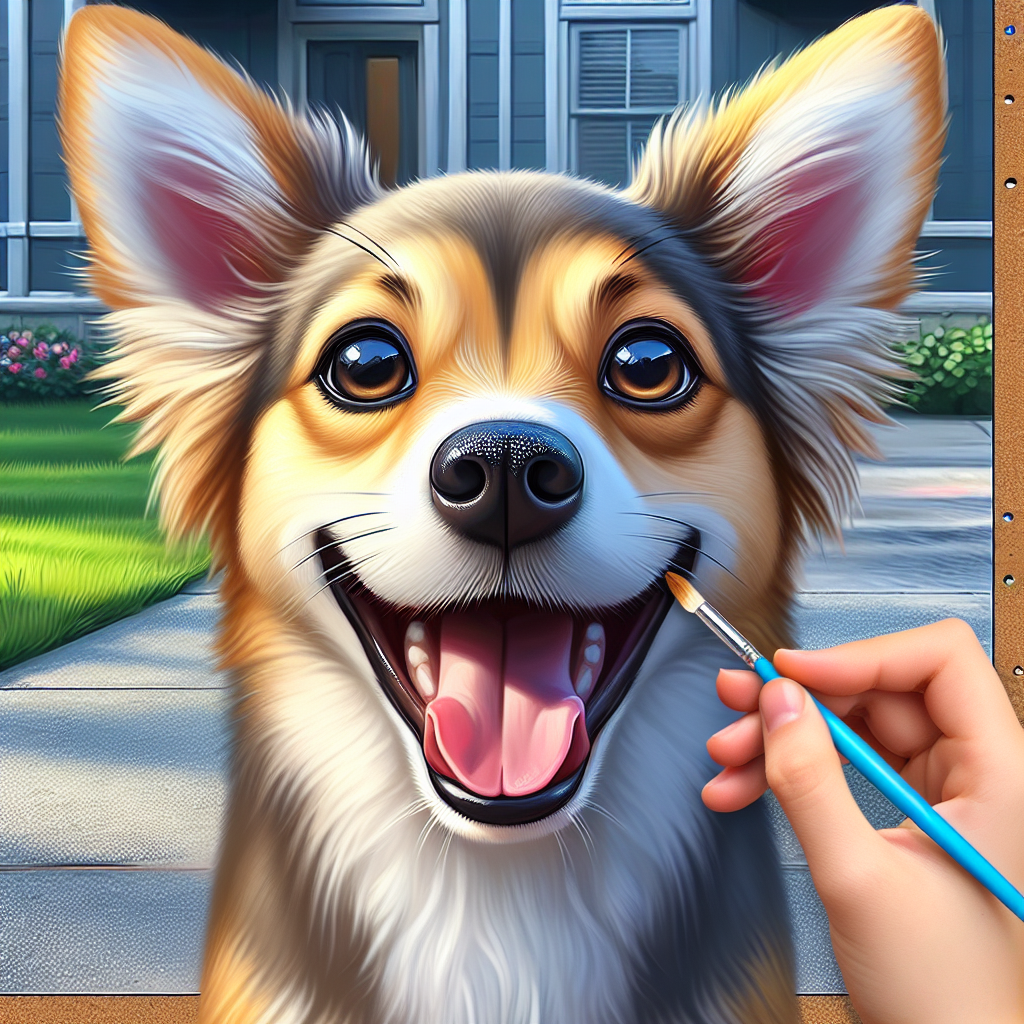The Flea Invasion: Recognizing the Signs

Hey, ever had that feeling when your skin prickles, and it’s not because of a ghost story? Well, it might be because of those tiny, blood-sucking nuisances—fleas. Even though they’re small, they can turn your home into a circus. One minute you’re watching TV, the next you’re scratching like a dog with a bad case of fleas. So, how do you know when these little pests have started their party? Flea infestation signs are not as obvious as you’d think. A few black specks on your pet? That could be flea dirt. Your pet scratching more than usual? Might be fleas. And if you’re lucky enough to spot one hopping around—congratulations, you’ve got a full-blown flea infestation home.
You see, fleas are sneaky. They don’t just hang out on your pets. Nope, they love your carpet, your sofa, and pretty much anywhere they can lay low and multiply. It’s like they’ve got a game plan—spread out, conquer, and multiply. So, the first step is to be aware. Keep an eye on your pets and your home. If they’ve invaded, you’ll know it soon enough. But don’t worry, we’re gonna tackle this together.
The Vacuum Chronicles: Your First Line of Defense
Now, here’s the thing. That vacuum cleaner sitting in your closet? It’s not just for keeping the floor tidy. In the battle against fleas, vacuuming for fleas is your first line of defense. Think of it as your secret weapon. That buzzing contraption can suck up fleas, their eggs, and larvae—breaking their life cycle right in its tracks. And let me tell you, there’s something oddly satisfying about hearing that hum knowing you’re taking back your turf.
So, how often should you vacuum? Every day, if possible. Yeah, I know, it’s a lot. But think of it as a workout. Plus, it’s free. No gym membership required. Focus on areas where your pets hang out, and don’t forget those nooks and crannies. Fleas love to hide where you least expect them. And remember, after vacuuming, empty the bag or canister outside. Unless you want those fleas getting cozy again.
Washing Away the Problem: Laundry Tactics
Alright, let’s talk about laundry. Not the most exciting topic, I know, but when it comes to fleas, washing bedding fleas out of your life is crucial. Fleas love soft, cozy places. So, your pet’s bedding? Prime real estate. Your bed? Another favorite spot. The best way to kill fleas in house includes a lot of hot water and detergent.
Here’s what you do: strip everything—pet beds, your bedding, throws, and anything else that could be a flea hotel. Throw it all in the washing machine. Use the hottest setting. You want those fleas to feel the heat. And while you’re at it, add some extra detergent for good measure. It’s a small price to pay for a flea-free zone. Once everything’s washed, toss it in the dryer on high heat. That’ll finish off any stragglers.
Steam Power: Bringing the Heat to Fleas
Now, if you really wanna turn up the heat on these little buggers, steam cleaning fleas out of your life is a game-changer. You might think steam cleaning is reserved for high-end hotels, but let me tell you, it’s a powerful tool in your flea-fighting arsenal. Those little suckers can’t handle the heat—literally.
Rent a steam cleaner if you don’t have one. They’re not too pricey, and trust me, it’s worth every penny. Focus on your carpets, upholstery, and anywhere else fleas might be hiding. The high temperature will kill fleas, eggs, and larvae on contact. Plus, there’s something about the hiss of steam that feels like sweet revenge.
Pet’s Role: The Unwitting Accomplice
Let’s not forget about our furry friends—Fido and Fluffy. As much as we love them, they’re often unwitting accomplices in this whole flea fiasco. They frolic outside, roll around in the grass, and next thing you know, they’re bringing home more than just a wagging tail. That’s where pets and flea control come into play.
First things first, give your pets a good bath. Use a flea shampoo if you’ve got it. If not, any good pet shampoo will do. Make sure to comb through their fur with a flea comb. It’s tedious, but it’s worth it. And don’t forget to treat them with a vet-recommended flea treatment. It’s like flea first aid tips for your pets.
Now, I know this all sounds like a lot of work. But trust me, once you see your pets and home flea-free, you’ll breathe a sigh of relief. It’s all part of the journey to reclaiming your space. Remember, you’re not alone in this fight. We’re all in the trenches together, battling these tiny invaders.
So, hang in there. You’ve got this. Thanks for sticking with me through this flea saga. Here’s to a flea-free home and happy pets.
Unleashing the Power of Flea Traps
Ah, flea traps—the silent sentinels in our homes. If you’re like me, you’ve spent nights itching and scratching, wondering if the fleas are plotting against you. Trust me, they are. But flea traps can be your secret weapon. They’re like those sticky fly strips, but for fleas. You set ’em up, and they do the dirty work for you.
Now, the best flea traps for home use are simple to set up. You can get them at your local store, or even online if you’re feeling fancy. You just need a small dish, some water, and a drop of dish soap. But hold your horses—not just any dish soap. You want the plain kind, nothing with fancy scents. Place the dish where you think the fleas are having their little flea parties. Add a small lamp over it to draw them in, and you’re good to go.
The trick is in the location. Under furniture, in the corners, or near pet bedding. Fleas are sneaky little critters. They love dark, warm places. So, set those traps and let them do their thing. It’s satisfying to see how many you’ve caught by morning. It’s like a game, but with real stakes—your sanity.
The Magic of Diatomaceous Earth
Diatomaceous earth might sound like a name from a sci-fi flick, but it’s as real as your grandma’s apple pie. This powdery stuff is a flea’s worst nightmare. It’s like walking on a bed of nails for them. A sprinkle here, a sprinkle there, and bam—no more fleas.
You can find diatomaceous earth for fleas at most garden centers or online. Make sure you get the food-grade type—it’s safe for pets and humans alike. Dust it over carpets, pet bedding, and other flea hotspots. It works by dehydrating fleas. They don’t stand a chance.
But, word to the wise, wear a mask when you apply it. You don’t want to breathe this stuff in. And don’t go overboard with it. A light dusting is all you need. Leave it for a couple of days, then vacuum it up. It’s like a mini flea apocalypse.
DIY Flea Spray: Kitchen Cabinet to the Rescue
Ever looked at your kitchen and thought, “Hey, I’ve got a flea arsenal here?” No? Well, let me open your eyes. With a few ingredients, you can whip up a homemade flea spray recipe that’ll have those fleas running for the hills.
Here’s the deal: you need vinegar, water, and some lemon juice. Mix equal parts vinegar and water, then add a splash of lemon juice for that extra kick. Put it all in a spray bottle, and you’ve got yourself a natural flea killer. Spray it on carpets, furniture, and even on your pet’s bedding.
The best part? It’s cheap and chemical-free. No need to worry about strange smells or harmful substances. Your kitchen is now your flea-fighting headquarters. And you didn’t have to spend a fortune.
Vacuuming: Not Just for Spring Cleaning
Vacuuming—it’s not just for when your mother-in-law visits. For fleas, it’s a game-changer. Those little buggers love to hide in carpets, and vacuuming is your way of saying, “Not in my house.”
How often should you do it? Vacuuming frequency for fleas should be high. We’re talking daily, if you can swing it. Focus on the areas your pets love. Fleas tend to hang out where your furry friends do. And don’t forget to empty the vacuum bag. You don’t want those fleas making a comeback.
It sounds like a workout, I know. But think of it as a battle plan. Your vacuum is your sword, and you’re the knight defending your home. Plus, your carpets will be cleaner than ever. It’s a win-win.
Dealing with Fleas on Your Furry Friends
Last but not least, let’s talk about your pets—your loyal sidekicks in this flea saga. They need some love too. Fleas aren’t just a nuisance for them—they’re a nightmare. So, what’s the best way to kill fleas in the house? Start with your pets.
There are plenty of flea treatments for pets out there. Shampoos, collars, and topical treatments. But if you’re like me, you might lean toward natural solutions. There are natural flea remedies for dogs that work wonders. A bath with some apple cider vinegar can do the trick. Or make a flea-repelling collar with essential oils.
Don’t forget to check your pets regularly. A flea comb can be your best friend here. It’s all about staying on top of things. Your pets will thank you with wagging tails and happy purrs.
So there you have it—your battle plan for a flea-free home. It’s not just about one method; it’s about combining them. And remember, you’re not alone in this fight. With a bit of elbow grease and some patience, you’ll reclaim your home. Keep up the good fight, my friends. Thanks for sticking with me on this flea-fighting journey.
How to Maintain a Flea-Free Home for Good
Alright, folks, let’s get down to brass tacks. Fleas are like that one guest who overstays their welcome—only they’re tinier and itchier. But fear not, because with a little elbow grease and a sprinkle of know-how, you can maintain a flea-free fortress. We’re talking long-term solutions here, not just a quick fix. Once you’ve kicked those little pests to the curb, keeping them out is a whole other ballgame. It’s like running a marathon, not a sprint.
First things first, it’s all about prevention. Keeping a flea-free home means you’ve got to think ahead. Flea prevention tips for households are your new best friends. Vacuum religiously. I mean it—like you’re getting ready for a visit from the Queen. Fleas hide in carpets and upholstery like it’s their own private hotel. Throw in a bit of baking soda before you vacuum. It helps suck the life out of those flea eggs. And don’t even get me started on those curtains. They need attention too, buddy.
Next, let’s talk about sustainable flea control methods. You don’t want to wage chemical warfare on your living room unless you absolutely have to. Instead, focus on keeping your house clean and tidy. Fleas hate a clean house—it’s like kryptonite to them. Swap out your pet’s bedding regularly and wash it in hot water. It’s a simple step, but it works wonders.
And, if you’ve got any outdoor pets, consider treating your yard. Fleas can hitch a ride inside on your shoes or pants, so keep your grass trimmed and your garden tidy. It’s all part of the plan to maintain a flea-free home.
Natural Remedies You Might Have Overlooked
Now, let’s chat about those natural remedies that might be lurking right under your nose. Ever thought about the power of vinegar or the magic of diatomaceous earth? These unsung heroes often go unnoticed, but they’re out there, ready to join your arsenal. We’re not talking snake oil here—just good old-fashioned home remedies that pack a punch.
Vinegar is a miracle worker. Mix equal parts of apple cider vinegar and water in a spray bottle, and you’ve got yourself a natural flea repellent. Spritz it on your pet’s fur (avoiding their eyes, of course) and around your home. The smell might not be Chanel No. 5, but fleas hate it.
Then there’s diatomaceous earth. It’s a fancy name for a simple thing. This powdery substance is a natural flea killer. Sprinkle it on carpets and leave it for a couple of days before vacuuming. It dehydrates fleas—sayonara, suckers.
And don’t forget about essential oils like lavender or eucalyptus. A few drops in a diffuser can help keep fleas at bay. Plus, your house will smell like a spa. Who wouldn’t want that?
The Role of Regular Pet Grooming in Flea Control
Don’t forget about regular pet grooming. It’s not just about keeping Fluffy looking fabulous. Grooming is a frontline defense against fleas. A little brush here, a bath there, and you’ll be two steps ahead of those pesky critters. It’s like having a personal army of flea-fighting soldiers—your pets will thank you.
A regular grooming schedule is essential. Brush your pet’s coat daily during flea season. It’s not just about looking good—it’s about feeling good. You’ll catch any unwanted critters before they get too comfy. Bathing your pet with a gentle, flea-repelling shampoo is another key tactic. It’s like giving them a protective shield.
And while you’re at it, check their ears, belly, and tail. Fleas love those spots. A flea comb is your best friend. It helps catch and remove fleas before they become a problem. Plus, your pet will love the extra attention—win-win.
Dealing with Flea Hotspots Around the House
Now, let’s get personal. Every house has its flea hotspots, those little nooks and crannies where fleas love to hide out. Maybe it’s that cozy rug in the living room or the dark corner of the basement. Finding these spots is like playing detective. But once you do, you’ll have the upper hand.
First, check the usual suspects—carpets, rugs, and upholstered furniture. Fleas love these places. They’re warm, shady, and perfect for laying eggs. Use a flea spray or powder to treat these areas. Don’t forget to vacuum thoroughly afterward.
Next, look for flea hotspots in the house that might surprise you. Fleas can hide in cracks in the floorboards or even in your pet’s favorite napping spot. Consider using a flea trap to catch any stragglers. It’s like setting a little ambush for those pesky critters.
And don’t overlook your pet’s bedding. It’s a flea paradise if you’re not careful. Wash it regularly in hot water. If you’re feeling extra cautious, use a pet-safe flea spray.
Celebrating a Flea-Free Zone: What’s Next?
Finally, once you’ve won the battle, it’s time to celebrate. But don’t let your guard down. Fleas are cheeky little buggers and can try to make a comeback when you least expect it. Staying vigilant is key. But hey, you’ve got this. Thanks for hanging in there, and here’s to a flea-free future!
Now that your home is a flea-free zone, keep it that way with flea-free living tips. Regular cleaning and grooming are your best allies. Keep an eye on your pets and their behavior. If they start scratching more than usual, it might be time to act.
And remember, maintaining a flea-free home isn’t just about keeping fleas out—it’s about keeping you and your pets happy and healthy. Enjoy your flea-free fortress, and here’s to many itch-free days ahead! Thanks for sticking with me on this journey. It’s been a wild ride, but you’ve got this. Wishing you all the best in keeping your home a haven for your furry friends. Cheers to a flea-free life!
Quick Takeaways:
Alright, buckle up folks, because we’re diving into the nitty-gritty of flea warfare. You’ve got a flea infestation in your home? Well, join the club. But don’t fret—I’ve got your back. Let’s kick things off with vacuuming for fleas. It’s not just for show. Vacuum every nook and cranny like it owes you money. Hit those flea hotspots in the house, from the cozy rug in the living room to the dark corners of your basement. Next, grab that bedding and give it a wash. Fleas hate a good, hot tumble. Think of it as a spa day—only for your linens.
Steam cleaning fleas is another ace up your sleeve. Hot steam? Fleas despise it. But let’s not forget about our furry pals. Keeping pets and flea control in check is key. Regular grooming is like giving your pets their own little army against fleas. And speaking of armies, diatomaceous earth for fleas—it’s like an ancient secret weapon. Sprinkle it around, and those fleas won’t know what hit ’em.
DIY folks, I’ve got a homemade flea spray recipe for you. Raid your kitchen and mix up a potion that will send fleas packing. And hey, prevention’s better than cure, right? So keep those flea prevention tips for households in mind. You want a flea-free fortress? You’ve got to keep your guard up. And remember, this isn’t a sprint. It’s a marathon, but you’ve got the tools to win it.
FAQs:
1.
What’s the best way to kill fleas in the house?
Well, there’s no one-size-fits-all answer here, but a combination of tactics usually does the trick. Start with vacuuming for fleas—daily if you can. Hit every corner like you’re on a mission. Then, wash all bedding fleas might be hiding in. Don’t forget steam cleaning fleas for those stubborn spots. Get your hands on some diatomaceous earth for fleas—it’s a game-changer. And hey, don’t skimp on flea treatments for pets. Your furry friends need to be in the clear too. It’s about hitting them from all angles, you know?
2.
How can I tell if I have a flea infestation in my home?
Ah, the age-old question. Flea infestation signs can be subtle or glaring. If you’re scratching like there’s no tomorrow or if your pet’s fur is a flea circus, you might have a problem. Keep an eye out for flea dirt—little black specks that look like pepper—and flea bites on your skin. If you’re still not sure, the best flea traps for home can confirm your suspicions. Check them after a few days, and if they’re full, well, you’ve got your answer.
3.
How often should I vacuum to keep fleas at bay?
Vacuuming frequency for fleas isn’t a one-and-done deal. You want to vacuum at least once a day during an infestation. Yeah, it sounds like a chore, but trust me, it’s worth it. Fleas are sneaky little critters. And don’t forget to empty that vacuum bag outside. You don’t want those pesky buggers crawling back into your house.
4.
Are there any natural flea remedies for dogs?
You bet! Natural flea remedies for dogs can be a lifesaver. A dish soap bath can work wonders—fleas hate it. Apple cider vinegar in their water can make them less tasty to fleas. And regular pet grooming benefits are huge. A good brushing can go a long way in keeping your dog flea-free. It’s like giving them a mini spa day, minus the candles.
5.
What are some household flea prevention tips?
Keeping fleas out is half the battle. So, let’s talk household flea prevention tips. First, keep your home tidy and clutter-free. Fleas love hiding spots. Next, maintain a regular cleaning schedule. Wash pet bedding often, and check your pets regularly. Use flea treatments for pets religiously. And don’t forget about those natural flea remedies for home—vinegar, lemon spray, you name it. Prevention’s your best friend in this fight.
Conclusion:
So, here we are, folks. The end of our little flea-fighting journey. You want the best way to kill fleas in the house? Well, it’s a bit of this and a bit of that. It’s about being relentless. You’re like a flea detective, sniffing out their hiding spots and eradicating them with precision. It’s a dance—one that involves vacuuming, washing, steaming, and a sprinkle of diatomaceous earth. And let’s not forget our furry sidekicks. They’re part of this battle too, and with regular grooming and the right treatments, they’re your allies.
But remember, this isn’t just about waging war. It’s about keeping the peace once the dust settles. Maintaining a flea-free home takes vigilance. So, keep those household flea prevention tips close. Stay sharp, stay prepared, and you’ll come out on top. Thanks for hanging in there with me. Here’s to a flea-free life and a home where you can finally put your feet up without scratching them raw. You got this!
References:
1. [EPA – Controlling Fleas and Ticks Around Your Home](https://www.epa.gov/pets/controlling-fleas-and-ticks-around-your-home)
2. [Healthline – How to Get Rid of Fleas in Your Home](https://www.healthline.com/health/healthy-home-guide/how-to-get-rid-of-fleas)
3. [WebMD – How Do I Get Rid of Fleas?](https://www.webmd.com/pets/kill-fleas-at-home)
4. [PetMD – Flea Infestation](https://www.petmd.com/general-health/flea-infestation)
5. [Martha Stewart – How to Get Rid of Fleas in the House Fast](https://www.marthastewart.com/how-to-get-rid-of-fleas-in-the-house-fast-11716197)
Our solution eradicates fleas on contact without harmful chemicals, ensuring a safe environment for your pets and family. Easy to use and highly effective, SayByeBugs helps you maintain a flea-free home. Learn more and order today at SayByeBugs.com
Our solution eradicates fleas on contact without harmful chemicals, ensuring a safe environment for your pets and family. Easy to use and highly effective, SayByeBugs helps you maintain a flea-free home. Learn more and order today at SayByeBugs.com








